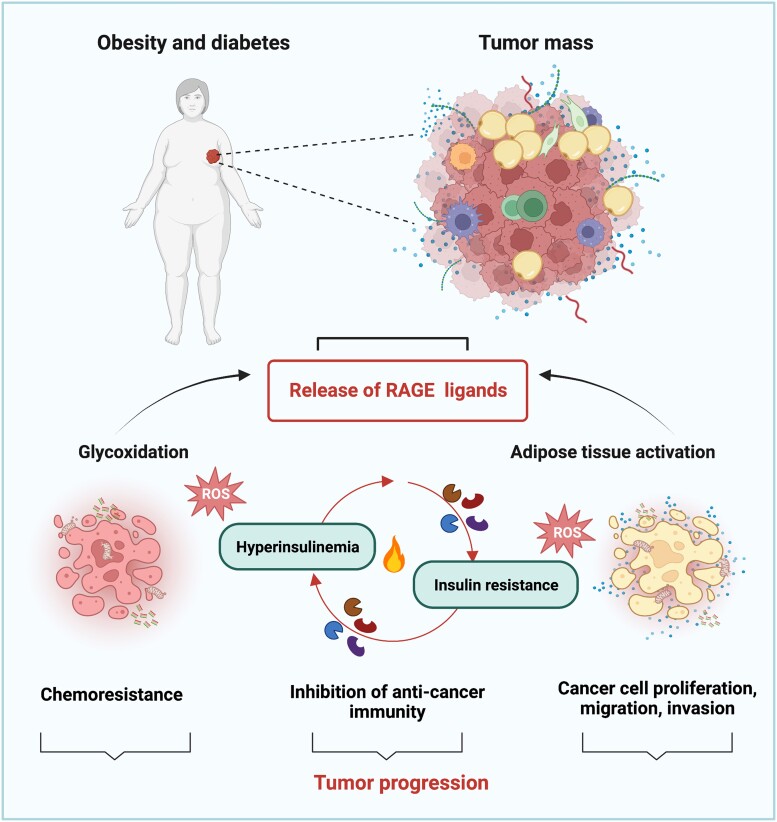Figure 3.
RAGE action in obese- and diabetic-related cancers. RAGE ligands may be released by the tumor mass in response to stressful conditions, such as glycoxidative stress and adipose tissue activation. Once released in the tumor milieu, RAGE ligands facilitate the establishment of insulin resistance and hyperinsulinemia. In addition, RAGE ligands prompt stimulatory effects like cell proliferation, migration, invasion, immuno-evasion and chemoresistance. Abbreviation: ROS, reactive oxygen species.

